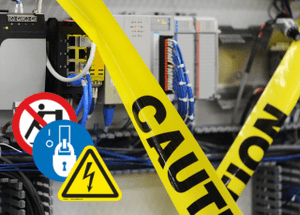New Labeling Guidelines Are Coming – How to Get Involved

Earlier last year, in 2021, we discussed the recent changes and attention being brought to the handling of lithium batteries as they relate to all types of electronic devices, examining the future impact they’re forecasted to have on the Waste Electrical and Electronic Equipment (WEEE) directive. And just this past week, the Environmental Protection Agency (EPA) here in the United States has announced they’ll be developing more best practices with respect to the collection of batteries to be recycled, as well as establishing a program to promote battery recycling through the development of voluntary labeling guidelines for batteries and communication materials for battery producers and consumers as directed by the new administration’s Infrastructure Investment and Jobs Act of 2021.
What
Batteries are Included in the Directive?
To aid in the implementation of these directives for US-based manufacturers,
the Office of Resource Conservation and Recovery (ORCR) within the EPA is now
requesting information on the end-of-life management of batteries, including
information on their generation, collection, recycling, reuse, as well as the
current labeling standards/requirements and suggestions for batteries regarding
their end-of-life for both single-use and rechargeable batteries. These types
of batteries include almost all battery types, including but not limited to:
- Lithium based batteries
- Nickel-metal hydride batteries
- Small consumer batteries
- Large format batteries (electrical vehicles and grid energy storage)
- Industrial batteries used in manufacturing, commercial settings, and healthcare
Specifically they’re looking for information about how consumers, businesses, and entities in the vehicle management chain (dealerships, repair shops, auction houses, dismantlers, entities that repurpose electric vehicle batteries, refurbishers, and scrap yards), and others are educated on how to manage batteries at the end-of-life. They’re encouraging input from a wide range of stakeholders involved in the battery lifecycle from its manufacture to its end-of-life management, including but not limited to industry stakeholders, researchers, academia, state, tribal, and local governments (U.S. territories and the District of Columbia, other federal agencies, community groups, non-governmental organizations, the public, and international organizations).
This is being spearheaded as an effort to reuse the critical and sparse materials and minerals being used in batteries, with the goal of up to 40% of the materials being used in the future coming from recycled parts, according to the U.S. Department of Energy. Along with aiding in the U.S.’s goal to reduce environmental impact and waste, this new directive is also going into place to reduce the hazards of improperly managed batteries, looking to reduce fire risks and health hazards from avoidable pollution.
New Labeling Guidelines are Coming
New labeling guidelines are on the horizon for any manufacturers using
batteries in the U.S., as under the new Bipartisan Infrastructure Law, the EPA
is required to develop voluntary labeling guidelines for batteries and other
forms of communication materials for battery producers and consumers about the
reuse and recycling of critical materials from batteries in affect by late 2026.
While we do have the
WEEE directive for labeling in the international community,
the United States is only technically required to use it for any products they
are selling in the European Union (EU). To begin the U.S.-based labeling
guidelines, the EPA would like to obtain input on the scope of the development
of voluntary labeling guidelines and understand existing battery labeling
guidelines that manufacturers are using, which is where you can come in.
How to Get Involved
In addition to new labels, the EPA also would like to obtain input from
commenters on the scope of the development of other forms of communication
materials for battery producers and consumers about the reuse and recycling of
critical materials from batteries as well as information on the existing
communication materials that have been developed on the end-of-life management
of batteries. The agency emphasizes the following questions to consider for
comment submission on labeling and communication practices/requirements:
- What should be the goals of developing voluntary labeling guidelines for batteries (increase critical minerals recovery, provide information to consumers about recycling and where they should bring their batteries; provide information to sorters and/or recyclers about the chemistry in the batteries; provide information to entities in the vehicle management chain about vehicle battery recycling).
- What information should be included on the label to achieve those goals (instructions on how to locate a collection or recycling facility, chemistry of batteries, symbol for not throwing batteries in the trash, curbside recycling bin or other inappropriate location)? How can this information be conveyed clearly to non-English speakers?
- Where should a label be placed (on battery, on device, on packaging, in store, or other location)?
- What considerations should be accounted for in developing labeling guidelines for batteries that will be widely adopted for use by battery producers/manufacturers?
- What do consumers find confusing with current battery labels? Please share any evidence-based consumer studies that have been conducted on battery labels. How can the battery labels be improved?
Best Practice Labeling for All Products
As advocates for safer labeling and for effective visual safety communication,
it’s our goal to keep you up to date with the latest best practices and standards.
As the safety labeling development period continues, we encourage you to
provide any feedback or comments to the EPA to take under consideration, even
detailing the current labeling systems you have in place for your batteries.
While the agency has until September 30, 2026 to enact their new labeling
guidelines, any written comments and information must be received on or before
July 11, 2022 to be considered in these first important planning stages. You
can provide comments or information at the top of the EPA’s notice page here. In the meantime,
browse our collections to update your safety
labels or safety signs, or even affix your
international products with our best practice No Waste WEEE labels.



